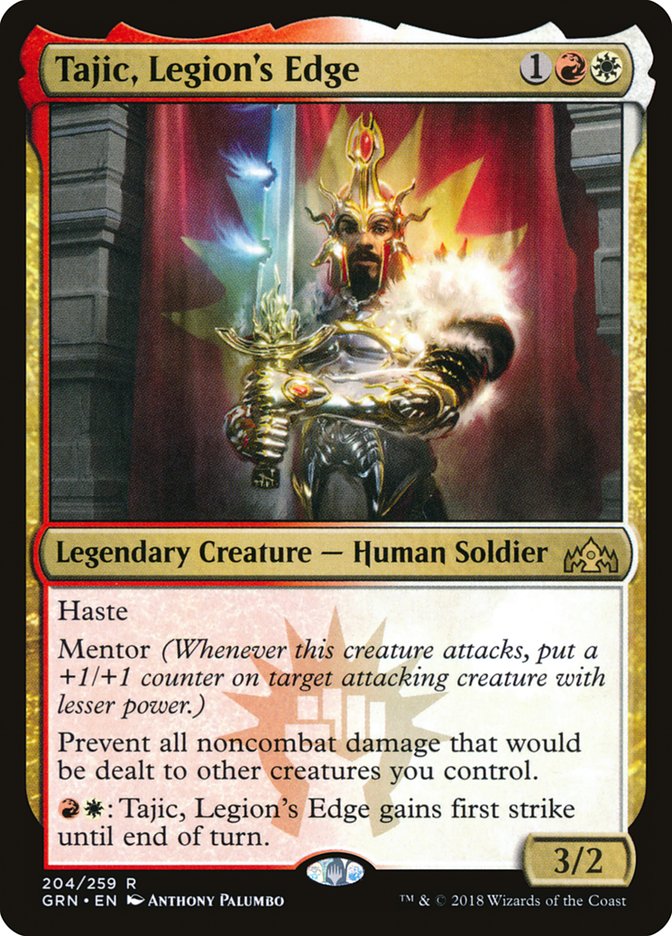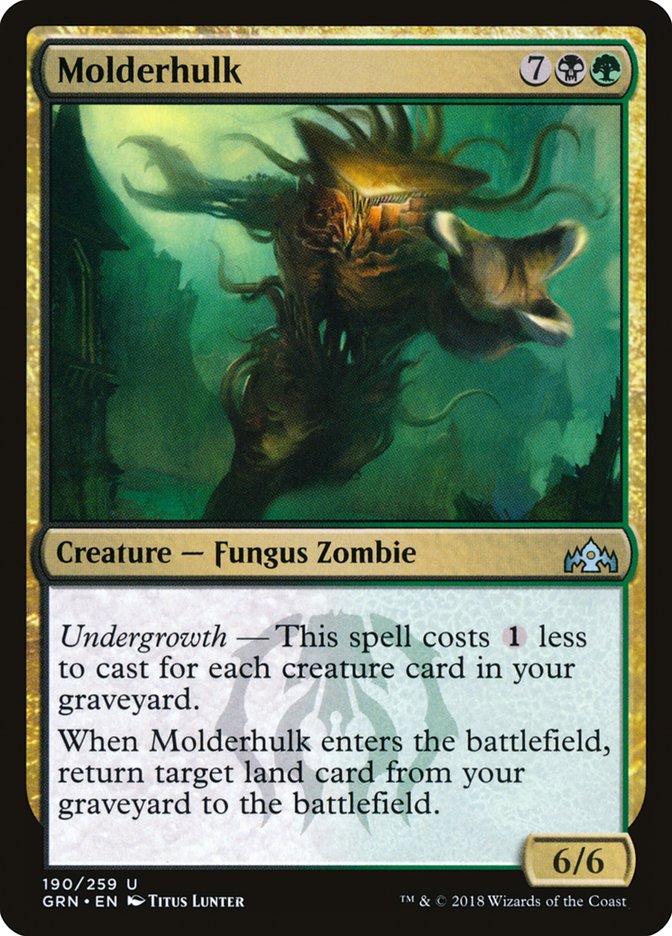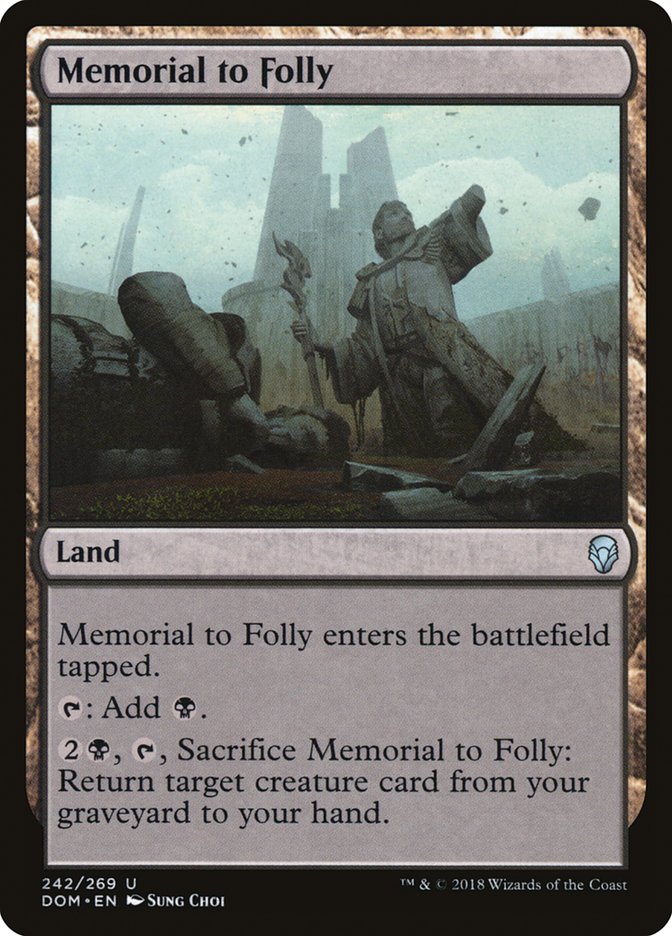Card evaluation isn’t easy.
New cards often exist in new contexts and enable unique play patterns. Given that multiple new cards enter (or leave) formats at the same time, adapting to the drastic change can be daunting. We try to take shortcuts, like comparing new cards to an old one, but we know that’s only going to give us part of the picture.
Even though I worked at Wizards of the Coast for a scant six months, I picked up many valuable lessons and tricks along the way. One of the ways to frame a set is by looking at it in terms of “full” and “half” cards. Full cards were defined as “I would be surprised if this didn’t see play.” Conversely, half cards were described as “I would not be surprised if this did see play.”
Oftentimes, we make bold judgements about cards like “this is unplayable” or “this is busted,” but it comes down to context most of the time. Designating cards as full and half is more useful, especially for me, because it means I can organize the cards into buckets. When thinking about what to build next, I can either build around a full card or try to break a half card.
Another thing to keep in mind is that these cards are all designed by humans. Humans make decisions that can be rationalized.
Looking at a card like Tajic, Legion’s Edge, you can infer a lot.
1. This is a full card, as its rate is stronger than many cards that have come previously.
2. If Tajic is expected to see play, then Tajic likely tells a story about what WotC expects Boros to be doing.
3. There are a lot of words on the card, which is a trait you often find on a mythic rare. Again, that’s another indication that it’s intended to see play. Tajic is unnecessarily generous in many areas.
Conversely, WotC has taken a more active stance in printing cards that serve formats other than Standard and Limited. Commander is incredibly popular and shows no sign of slowing down, while things like Tiny Leaders and Brawl occasionally pop up. They serve many masters.
Cards like Thousand-Year Storm and Mnemonic Betrayal scream Commander, although sometimes those cards accidentally end up broken in Standard. Again, these cards are made by humans, and humans make mistakes.
With all that in mind, here’s my list of Guilds of Ravnica “full” cards:
Boros
Realistically, the full cards are going to be the build-arounds and the most ubiquitous cards. If you’re finding it difficult to come up with deck ideas, the full cards are where you should begin.
Tajic and Aurelia form the backbone of the Boros guild. Curving one into the other is incredibly powerful, and they are clearly meant to work together. Since Boros is likely going to be attacking, Integrity is a cheap combat trick that allows your valuable creatures (such as Tajic) to win in combat. Once your opponent stabilizes, you can use Intervention to prolong the game or even finish off a wounded opponent.
Integrity isn’t going to blow you away on power level, but it’s versatile enough that it will see play in high numbers, which is why it makes this list. If Boros were less one-dimensional (and therefore, less interested in playing Integrity in some versions), it wouldn’t be a full card. However, given how well it works with Tajic and Aurelia, it’s going to be a staple.
Golgari
Glowspore Shaman is probably the weakest card on the list, but it’s a powerful enough enabler that I’m willing to take a chance on it. Similarly, I’m not as confident about cards like Vraska, Golgari Queen or Underrealm Lich seeing play, but that’s mostly an issue with Golgari as a whole.
Golgari is the guild with the least-defined path. They do grindy things but have some elements of aggression, midrange, and control. Tajic and Aurelia are straight-=forward and there’s not a lot of ways to deviate from the given plan of Boros, whereas Golgari has about ten different decks you can build. Some might include Underrealm Lich, Vraska, or Izoni, Thousand-Eyed, but not necessarily all of them.
The variety within the guild is a feature, not a bug, but it does make it difficult to pinpoint exactly which cards I label as full or half. Realistically, this is the direction I’d prefer Magic go toward. Give the players a bunch of potential tools and let them figure out how to best utilize them, rather than having a clear Boros deck almost preconstructed with few ways to actually deviate from it.
Dimir
Dimir’s strongest tools are mostly of the grindy variety, but similarly to Golgari, there’s no explicit path to take. There are also some aggressive tools, but the cards are weaker on average. I could see that version end up being one of the better decks in the format, filling a niche similar to what Ken Yukuhiro was doing with Mono-Blue Wizards toward the end of last season, but those cards don’t necessarily belong on the full card list.
Dream Eater and Doom Whisperer don’t go in every single deck, but I anticipate them being present enough that they make the list. Sinister Sabotage is the Disallow replacement for non-Izzet control decks, and Notion Rain plus Thought Erasure is the perfect early-game package for Dimir midrange.
Selesnya
Selesnya is one of the strongest-looking guilds, with several powerful cards. However, the cards mostly accomplish the same things. If you’re building a Selesnya creature deck, you won’t be short on options at any part on the curve, but most of the cards are replaceable. Thankfully, those options are all great and there’s not really anything you’re truly missing out on.
You have access to sticky threats, go-wide stuff, and one of the format’s best removal spells in Conclave Tribunal. No matter which direction you take your Selesnya deck, you can’t really go wrong. We may debate nuance, but at the end of the day, your deck will always be at least fine.
Izzet
Something must be the weakest, and while I wish Izzet had a stronger identity other than “they do weird stuff,” it means you have to get creative and scrappy when building Izzet decks.
Chemister’s Insight in incredible in long games, but it’s more likely to benefit an actual control deck like Azorius than any sort of Izzet deck.
Monocolor
Despite being guild-oriented, this set has numerous monocolored hits. Granted, these are all fairly necessary, as they fill out the curves of various decks while also providing essential effects.
Pelt Collector adds a much-needed one-drop to green-based decks while Ritual of Soot gives non-white decks a viable sweeper. The rest of the cards in this section all fill holes in decks that previously needed something for those slots desperately, so they’ll be all over the place.
Shocklands
Unfortunately, shocklands and checklands are the vast majority of the mana fixing we have available at the moment. Fortunately, we have shocklands and checklands!
Things might be rough at the moment, but once all the shocklands are released, the world of three-color manabases will truly open up to us. I imagine it will feel like getting two sets instead one.
Half Cards
With less discussion, here’s my list of “half” cards:
Again, Izzet is difficult to gauge. Things like Firemind’s Research and Ral, Izzet Viceroy reek of cards that are just short on power level to see competitive play, especially once you consider how similar Ral is to Teferi and how much stronger Azorius is compared to Izzet. Firemind’s Research will typically underperform when compared to Search for Azcanta, and maybe even Treasure Map.
Niv-Mizzet may see play due to Sarkhan, Fireblood, but otherwise it’s a rather tall order, especially since Ravenous Chupacabra and Conclave Tribunal handle it cleanly.
Crackling Drake is something that people apparently like, but I can’t get behind it. The other options at four mana are more appealing, at least to me. It’s possible that an Enigma Drake deck is now possible, but it almost certainly won’t be a “low land count, Dive Down, Turbo Xerox” style of deck, so I have no idea what it would actually look like. Regardless, sticking some four-toughness threats isn’t the easiest thing in the world, especially when they cost three and four mana. If others hadn’t expressed interest in that sort of deck (or Crackling Drake as a card in general), it probably wouldn’t have even made my half card list.
I firmly believe in Swiftblade Vindicator and Justice Strike, but I could very easily be wrong. They are strong cards, but won’t be ubiquitous, which is why they end up on the half card list.
Not all Dimir decks will contain these cards. Blood Operative and Thoughtbound Phantasm look strong but could easily not line up well against the rest of the format. Both Dimir split cards are playable, but not particularly playable in large numbers. You could make a case for either, depending on the texture of the format, but for now, they aren’t in my starting maindecks.
Oddly enough, most of Selesnya’s cards cross over into full card territory. Venerated Loxodon and Trostani Discordant are more than reasonable ways to reward you for going wide, but they both have their issues. You need some sort of payoff, so normally one of them would make the cut regardless, but there are other options, like Flourish, Benalish Marshal, and Radiant Destiny.
This isn’t like Boros where you play all the good cards and don’t have much left. Selesnya gives you a wide variety of options and you get to pick and choose which works best for your deck.
Again, the Golgari have an embarrassment of riches. Much like Dimir, many of these cards are the payoffs for the various Golgari archetypes, but you don’t necessarily want to play them with each other.
I might be giving these cards more generous ratings than they deserve. For example, Circuitous Route could fit into any number of midrange ramp decks (remember, we also have Omniscience and Gilded Lotus available to us) and could potentially usher in a new iteration of Bant Nexus, but realistically, Explosive Vegetation’s time in Standard has probably come to a close. Dawn of Hope makes the list because of Bant Nexus, but it’s not even close to as strong as Haze of Pollen.
Cards like Dead Weight and Burglar Rat might see play, but it will probably be few and far between. Dead Weight will probably be sideboard only and Burglar Rat has serious issues with Nullhide Ferox. To top it off, there isn’t much that it’s trading with.
Sometimes eight multicolor lands won’t be enough. There isn’t much in the way of playable utility lands either. Occasionally you won’t have much to do on Turn 1 and the extra fixing will be nice. Some three-color decks will probably want Guildgates too.
Even further down the list, there are cards that look like they could be playable under the right circumstances, and I might build decks that include them, but they probably won’t show up in competitive play.
Half Cards in Action
Here’s a list that’s an example of using half cards.
Creatures (26)
- 2 Deadeye Tracker
- 2 Ravenous Chupacabra
- 4 Stitcher's Supplier
- 3 Molderhulk
- 3 Midnight Reaper
- 4 Glowspore Shaman
- 4 Burglar Rat
- 4 Plaguecrafter
Lands (24)
Spells (10)

Overall, this deck isn’t playing many cards that are strong on rate. Instead, it’s a synergy-based deck in a rate-based format. That fact alone doesn’t make me want to immediately dismiss the idea, but it’s something that must happen in a specific time or place.
I started with a Zombies shell, slowly added green mana and some Golgari cards, and then eventually abandoned the Zombie sub-theme altogether. Playing cards like Plaguecrafter seemed like a better idea than Death Baron. Despite being Zombies, Stitcher’s Supplier and Molderhulk don’t require you to lean into their tribal nature.
Is Molderhulk plus Memorial to Folly actually great? Maybe recurring random creatures isn’t powerful enough and people will go over the top of you, but a 6/6 is really big. Anything over four toughness is incredibly difficult to remove, and while Molderhulk lacks evasion, you should eventually be able to grind them out.
Burglar Rat into Plaguecrafter is a pretty sick curve, especially against creatureless decks. Getting those two back with Gruesome Menagerie also seems delightful but might be too cute. Regardless, a black-based Golgari deck has numerous grindy options, each of which will take time to explore.
Still, it’s a different take on Golgari from what I’ve seen from most people.
What Next?
How do we utilize this information?
While it’s highly applicable right now, you can use this system to help identity how to evaluate new cards and start building decks with them. Going forward, I highly recommend everyone try this method, rather than sorting the cards into “playable” and “unplayable.”
As for right now, I’m putting this out there to judge myself in a few weeks and see how I did. I’m confident I got most of this right, but I could always be wrong!





